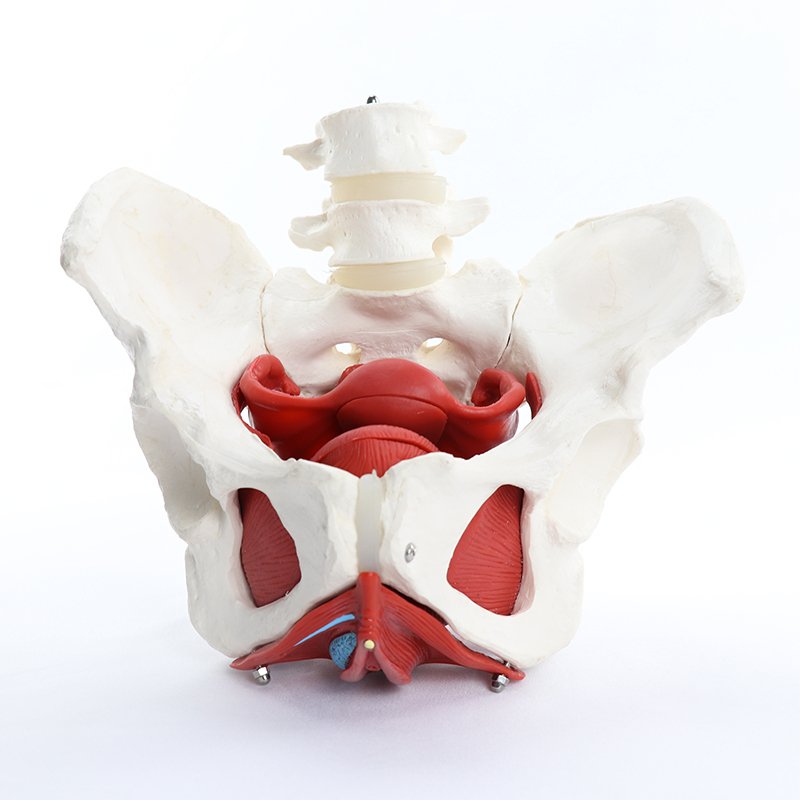
If you’ve ever worked with a pelvic health physio, you’ll have often heard us say or cue “core and floor”. And if you’ve heard it once, you’ve heard it 100 times (and probably say it over in your own head daily – that’s a win for us!). If this is new to you, let us explain what it means.
Our core and pelvic floor muscles are like Batman and Robin; Bluey and Bingo; Torvill and Dean; you get the idea. They work in harmony as one leads and the other follows. So what happens when Robin starts trying to call the shots, or Torvill takes the lead? The catastrophic consequences ring true for the pelvic floor. Prolonged miscommunication can lead to pelvic floor dysfunction and a host of other problems over time.
What is our “core”?
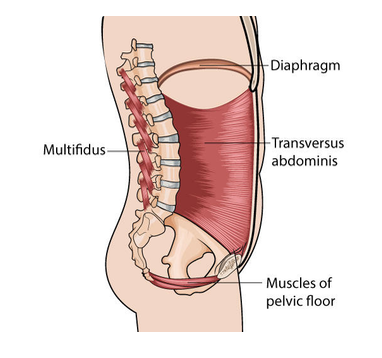
Many people think a six-pack is the key indicator for having core muscles. On one hand, that’s true—referring to the outer/superficial layer of muscle (rectus abdominis)—however, the core is like an onion, and the layers go much, much deeper. An efficient core requires good activation and muscle coordination, supported by synergy and breathing biomechanics.
Think of your core as a cylinder of support for your body. The diaphragm is the roof, the tummy and back muscles as the main cylinder and pelvic floor muscles as the base. You can already start to get an idea of how much pressure the pelvic floor is under before we add in any complexities of daily life. In an optimally functioning system, the regulation of pressure within the abdomen happens automatically. However, in many individuals this regulation is nonoptimal and this is where they run into problems.
Pelvic floor pressure control
Our core, pelvic floor and breath all work together to regulate this pressure. The cylinder of support is a closed pressure system, so as one side moves inwards (muscles contract), other parts need to move outwards (relax) to ensure good pressure flow.
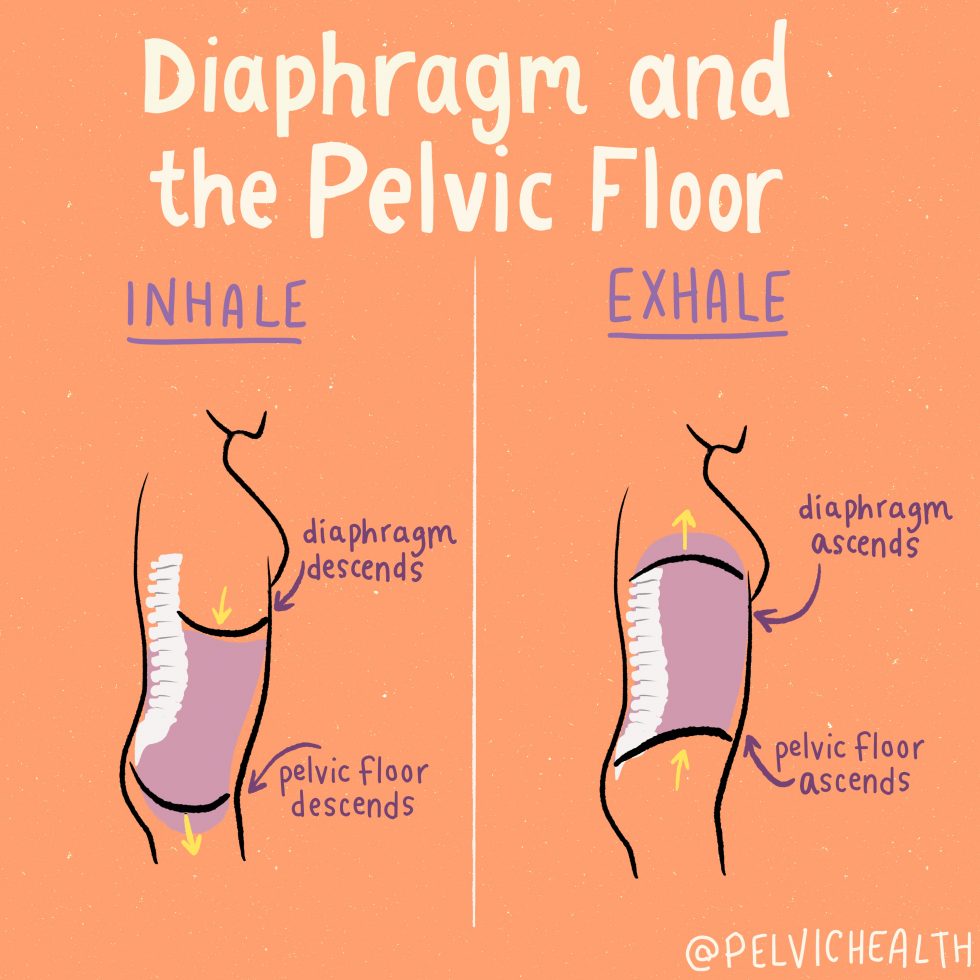
Biomechanics
When you breathe in, your ribs and lungs expand to inhale the air, causing your diaphragm to contract and move downwards. Normally this will result in the automatic relaxation of your pelvic floor, where the muscles also move downwards to counteract the pressure. When you exhale, the diaphragm moves upwards and creates a gentle negative pressure, where the pelvic floor muscles contract and easily move upwards.
Pelvic floor dysfunction
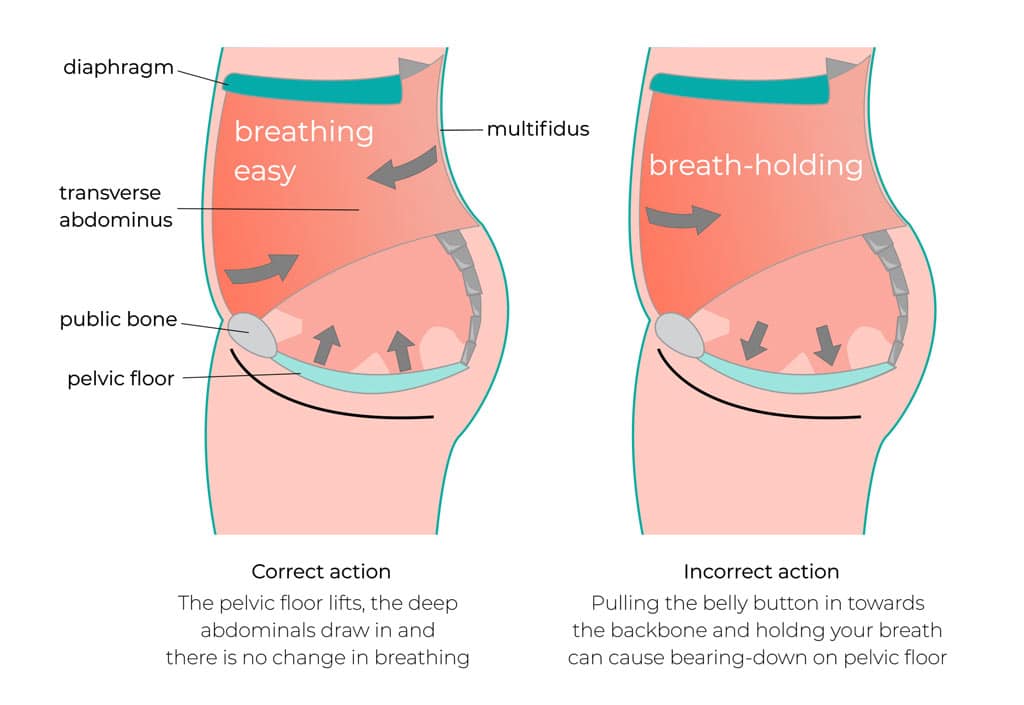
Pelvic floor dysfunction tends to occur when abdominal pressures and breathing biomechanics aren’t working properly. For example, if you brace and hold your tummy there’s an increased pressure placed on your pelvic floor. In some individuals, there can be discoordination and a disconnect between tummy and pelvic floor whereby the pelvic floor muscles contract when breathing in, causing an increase in intra-abdominal pressure (IAP).
Why and how is this relevant?
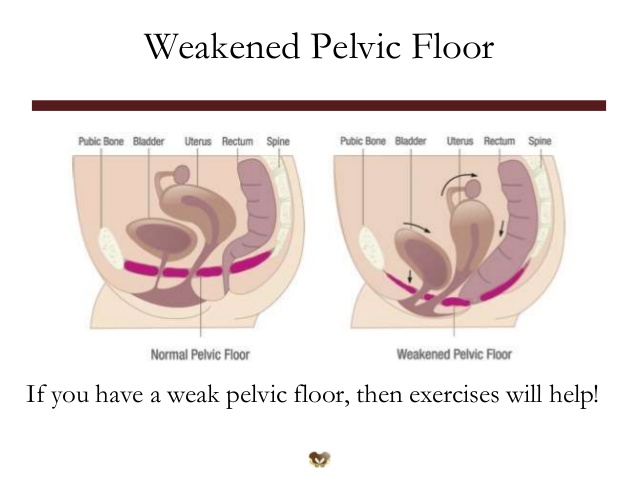
You can start to see why a visible six-pack might not actually represent a strong or well-functioning core and floor. You could be doing 10,000 crunches a day but without muscle coordination and pressure regulation system awareness, it might be causing more harm than good by placing extra pressure on your pelvic floor muscles. If the pelvic floor is regularly withstanding high pressures over a long period of time, it will become exhausted, fatigued, and potentially weaken. Say what?! Yep, over time this places strain on the pelvic organs and can result in loss of bladder and/or bowel control, or even pelvic organ prolapse.
Prevention and management
Preventing pelvic floor dysfunction and managing a healthy core and floor isn’t rocket science. Pelvic health physiotherapists will often assess the following to be able to determine the best course of action for an individual:
- Standing posture/global biomechanics
- Core muscle tone, endurance and strength
- Breathing biomechanics and technique
- Pelvic floor muscle activation, coordination, strength and endurance
The pelvic floor puts up with a lot of unavoidable daily stress. Gravity, load, illness (excessive coughing), childbirth and more can all place more pressure on our pelvic floor so it’s important we do everything we can to keep it strong and healthy throughout all stages of life. Education and practice are key.
If you need help to optimise your pelvic floor, book in for a pelvic health assessment at Pivotal. Our clinic is perfectly equipped with the tools, resources and expertise to help you get back in control and feeling great.
~ Sophie Alderslade, Physiotherapist
References:
Mandy Roscher 2022, PhysioSkills.
@PelvicHealth 2022, Pelvic Health and Rehab Center.